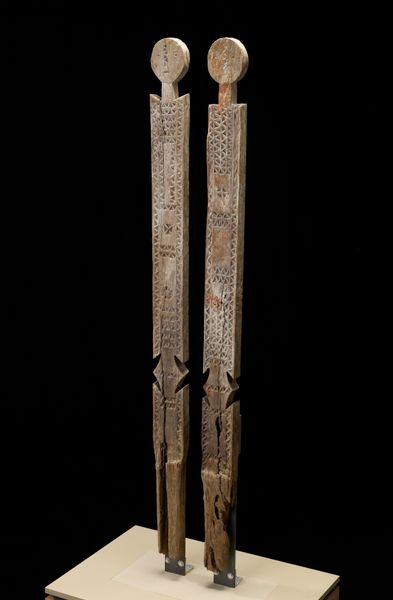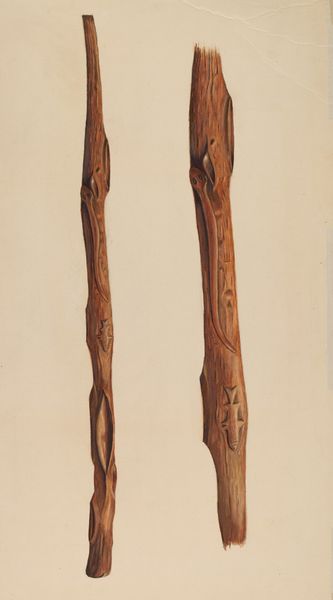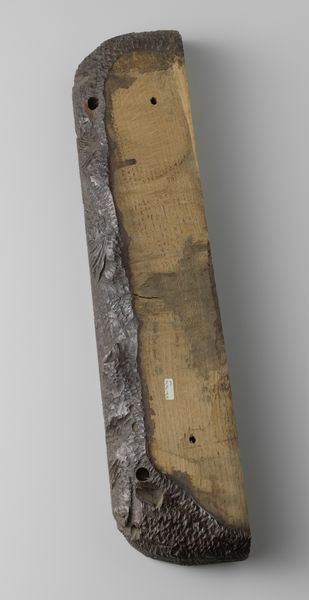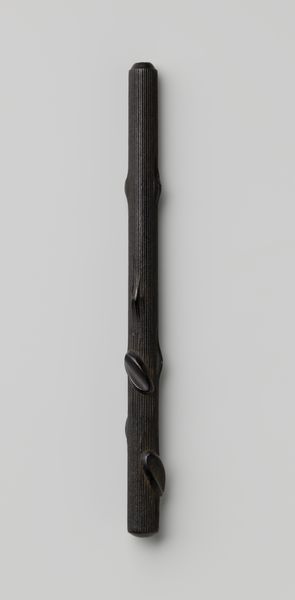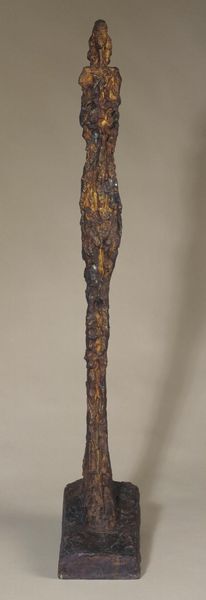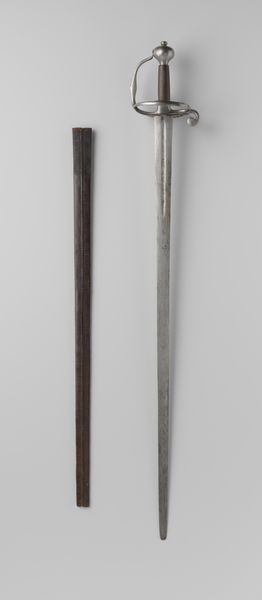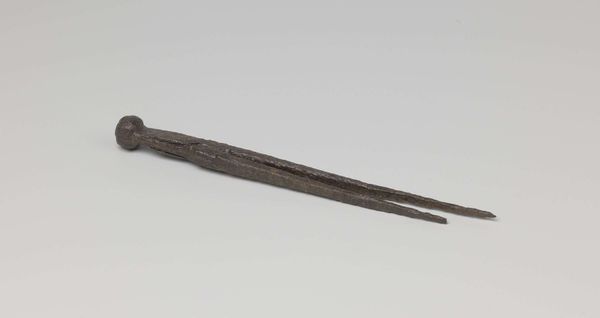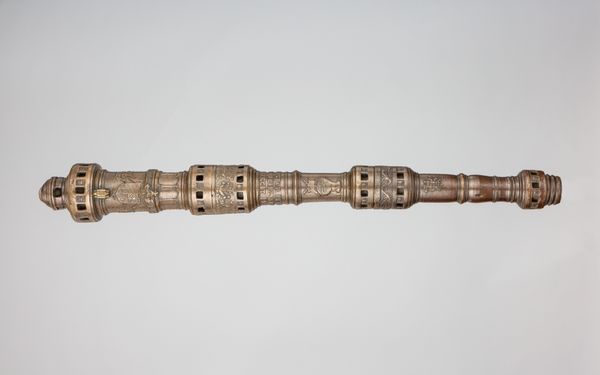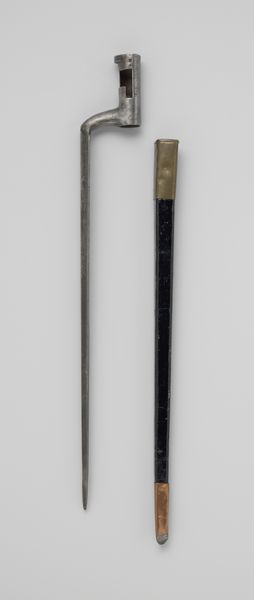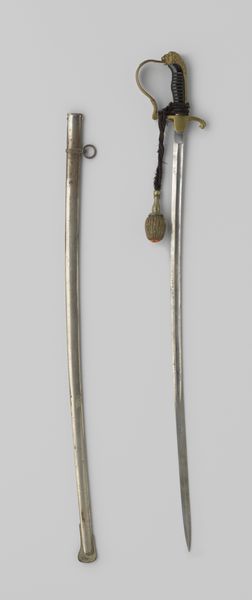
carving, sculpture, wood
#
african-art
#
folk-art
#
carving
#
sculpture
#
figuration
#
folk-art
#
geometric
#
sculpture
#
wood
Dimensions: 70 1/2 x 4 1/4 x 1 7/8 in. (179.1 x 10.8 x 4.8 cm)
Copyright: Public Domain
Editor: Here we have a pair of Vigango, wooden sculptures dating back to the late 19th or early 20th century, crafted by the Mijikenda people, specifically the Kauma subgroup. Their verticality is striking; there’s a sense of aged dignity, and intricate patterning that's visually fascinating. What can you tell me about the structure and design? Curator: Observe how the artist meticulously integrates geometric motifs and symbolic representations. The interplay between the flat, almost planar surfaces and the carved, patterned sections is particularly engaging. Consider how the differing textures—the smoothness of the head versus the roughness of the base—contribute to a dynamic visual experience. Editor: It’s true. The repetition of triangular patterns against the rectilinear form provides such interesting contrast. Is that tension intentional, perhaps even meaningful? Curator: The deliberate use of repetition, particularly the triangular motifs, invites contemplation. Notice how the eye moves upward, guided by the rhythmic progression of shapes, culminating in the simplified head. Also, consider the negative space created by the carving; what impact does that have on the sculpture's presence? Editor: The negative space definitely lightens the heaviness. It allows you to see through parts of the figure almost, but also highlights the parts of the carvings you can't. These details bring them to life in some way. Curator: Precisely. The carver's sophisticated understanding of form, space, and texture elevates the work beyond mere representation, engaging the viewer on an aesthetic level. This careful balancing act produces a profound statement of artistic intention. Editor: Thank you for highlighting the nuances within its geometric composition; it truly enhances the appreciation of Vigango's artistry. Curator: Indeed, dissecting these carvings beyond their appearance reveals their deep complexity, prompting further artistic insight.
